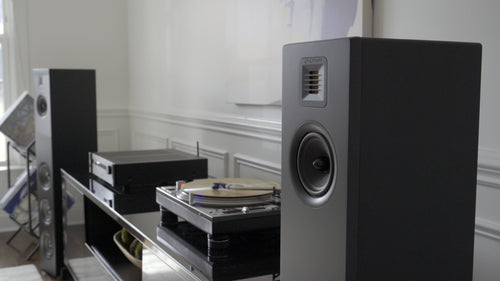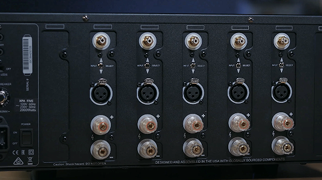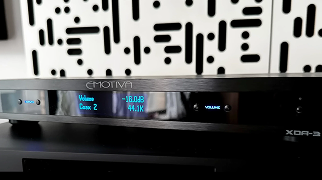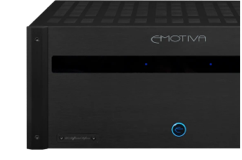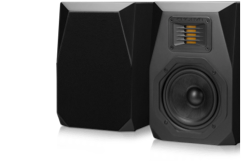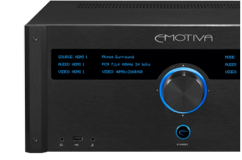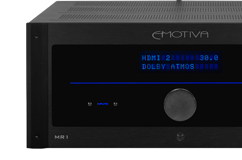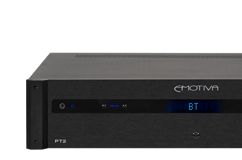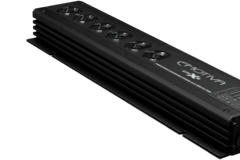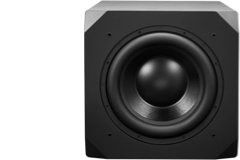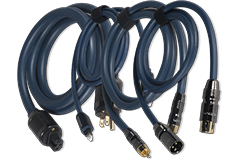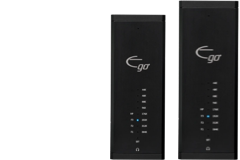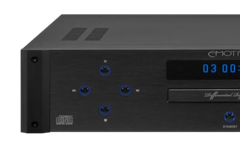
Until recently, most popular surround sound formats offered either 5.1 or 7.1 channels, and surround sound music and movie sound tracks were mixed to work well with the standard speaker layouts. Some audiophiles and dedicated video fans chose to install more speakers, including more surround channels, and even speakers above the screen, but all the existing surround sound decoders could do was guess what to send to those speakers. The result was sometimes interesting, but usually less than compelling.

In order to take full advantage of this new technology, a surround sound processor must both include the advanced technology necessary to decode it properly, and support enough channels to deliver a compelling immersive experience. The Emotiva RMC-1 provides support for sixteen audiophile quality fully balanced audio output channels, which can be configured as fifteen full-range channels and one subwoofer output, or thirteen full-range channels and up to three subwoofer outputs. In addition to this, the RMC-1 includes three expansion slots, which can accommodate up to twelve additional output channels, when and if they are needed, as well as a variety of additional input options.
The RMC-1, RMC-1L, and XMC-2 support all of the standard channel configurations specified by the applicable licenses for Dolby Atmos and DTS:X, as well as continuing to fully support existing high quality surround sound formats like Dolby TrueHD and DTS-HD Master Audio. Users familiar with the previous standards will notice a few changes in how they are decoded. All Dolby Atmos content will be decoded using the new Dolby Atmos renderer; and Dolby TrueHD and other Dolby Digital content will de decoded exactly as before; but the Dolby PLIIx surround synthesizer has been replaced with the more advanced Dolby Surround Upmixer. Likewise, DTS:X content will be decoded by the DTS:X decoder; and DTX-HD Master Audio and DTS Digital content will continue to be decoded as before; but the older DTS Neo:6 synthesizer has been replaced by the new DTS Neural:X upmixer. Recent updates to the licenses now also specify which upmixer may be chosen for use with each particular type of content.
Dolby Atmos is a surround sound technology which is commonly used in movie theaters and for the sound tracks on Blu-Ray and 4k UHD movie discs and streaming content. With virtually all previous surround sound formats, like Dolby TrueHD and DTS Master Audio, the audio content consists of several tracks, each intended to be played via a specific speaker. With Dolby Atmos, the audio content is divided into bed channels and objects. The bed channels are each intended to be played from a specific speaker. However, sound objects are defined as having specific locations in space; when the audio information is decoded, each object is assigned to one or more speakers based on the speaker layout you have. Most previous surround sound formats support either five or seven speakers plus a subwoofer; Dolby Atmos adds the option to include width speakers. Dolby Atmos also specifically supports “height channels”. Height channels are used to portray objects above the listener, and are reproduced either by speakers mounted in the ceiling, or by special speakers mounted on top of certain other main channel speakers, and positioned to bounce their audio signal off the ceiling, so it reaches the listener from above.
|
Dolby Atmos |
DTS:X |
Dolby Digital Upmixer |
DTS Neural:X Upmixer |
|
|
Dolby Atmos content |
YES |
X |
X |
X |
|
DTS:X content |
X |
YES |
X |
X |
|
Dolby Digital content (except Atmos) |
X |
X |
YES |
X |
|
DTS Digital content (except DTS:X) |
X |
X |
X |
YES |
|
Stereo Analog content |
X |
X |
YES |
YES |
|
Stereo PCM content |
X |
X |
YES |
YES |
|
Multi-channel PCM content |
X |
X |
YES |
YES |
|
DSD content |
X |
X |
X |
X |
Share Post


